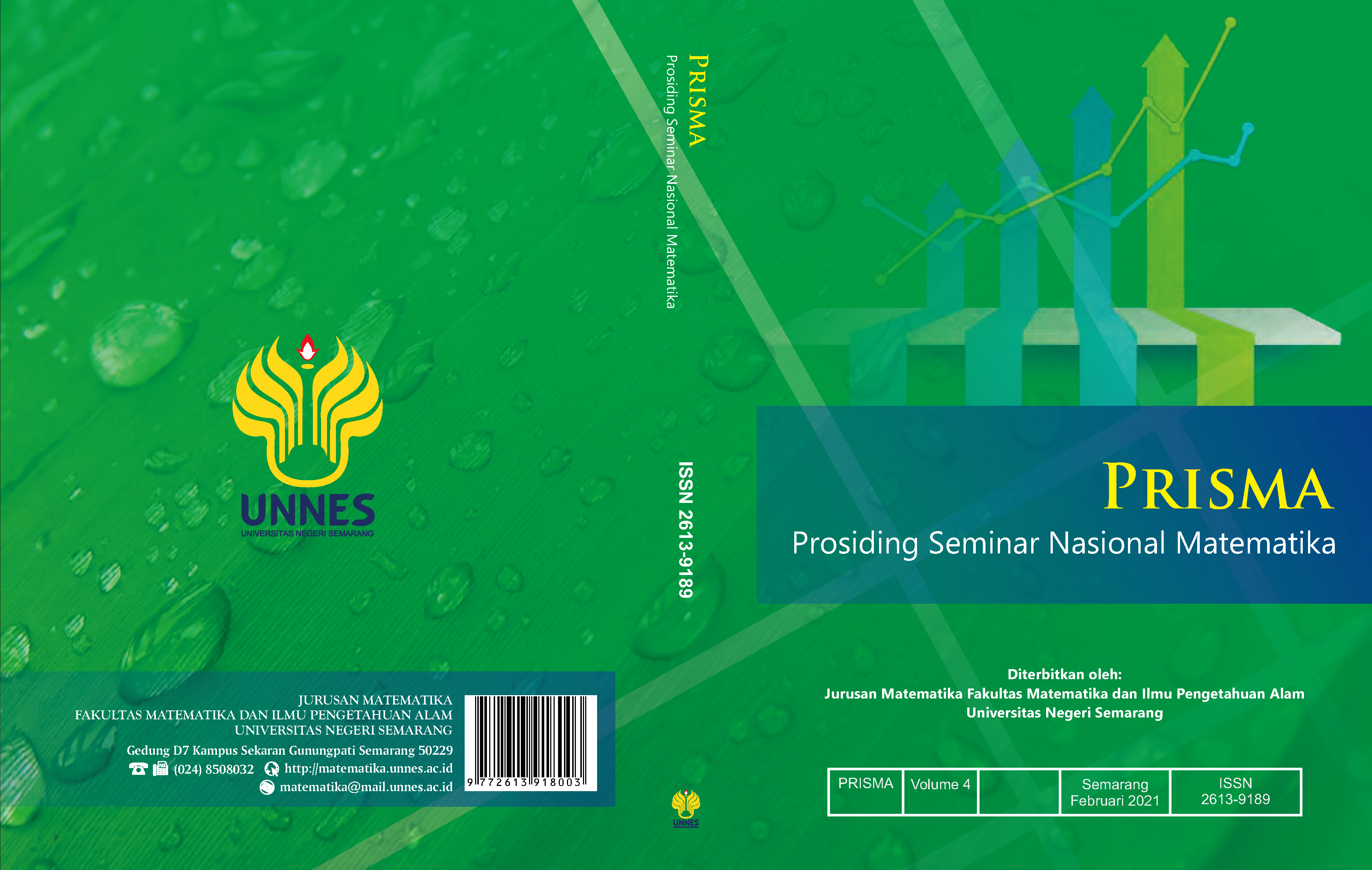Analisis Miskonsepsi Mahasiswa pada Matakuliah Analisis Real
Main Article Content
Abstract
Analisis Real merupakan matakuliah dengan proses berpikir deduktif aksiomatik. Sebagian besar mahasiswa Pendidikan Matematika mengalami kesalahpahaman dalam belajar matakuliah analisis Real, terutama pada Barisan dan Deret. Tujuan dari penelitian ini adalah menganalisis miskonsepsi mahasiswa dalam memecahkan Barisan dan Deret. Metode penelitian yang digunakan deskriptif kualitatif dengan pendekatan kualitatif eksploratif. Subyek penelitian sebanyak 9 mahasiswa Pendidikan matematika yang mengambil matakuliah Analisis Real di Tahun Akademik 2019/2020. 9 Mahasiswa tersebut masuk dalam kategori yaitu kategori tinggi, sedang, dan rendah, setiap kategori diambil sebanyak tiga orang mahasiswa. Instrumen yang digunakan untuk mengumpulkan data worksheet untuk pemecahan masalah adalah pedoman wawancara. Hasil penelitian diperoleh rata-rata pemahaman mahasiswa pada materi Barisan dan Deret adalah 62,67%, ditemukan tiap indikator adanya miskonsepsi, serta beberapa penyebab miskonsepsi.
Article Details
References
Isnani, P. Susongko, Utami, W. B, & Herani, L. (2019). Estimation of college students’ ability on real analysis course using Rasch model. Research and Evaluation Education, 5(2), 1-7.
Isnani, Waluya, S. B, Rochmad, & Wardono. (2020)a. Analysis of mathematical creativity in mathematics learning is open ended. In Journal of Physics: Conference Series (Vol. 1511, No. 1, p. 012102). IOP Publishing.
Isnani, Waluya, S. B, Rochmad. (2020)b. Problem posing in the proof process identifying creative thinking in mathematics.. In Journal of Physics: Conference Series (Vol. 1657, No. 1, p. 012066). IOP Publishing.
Isnani, Waluya,S.B, Rochmad, Dwijanto, & T.S.N Asih. (2021). Analysis of Problem Solving Difficulties at Limits of Sequences. Journal of Physics: Conference Series (Vol. 1722- 012033). IOP Publishing.
Liang, S. (2016). Teaching the Concept of Limit by Using Conceptual Conflict Strategy and Desmos Graphing Calculator. International Journal of Research in Education and Science, 2(1), 35-48.
Mufit, F., & Fauzan, A. (2019, October). The application of real experiments video analysis in the CCBL model to remediate the misconceptions about motion’s concept. In Journal of Physics: Conference Series (Vol. 1317, No. 1, p. 012156). IOP Publishing.
Muzangwa, J., & Chifamba, P. (2012). Analysis of Errors and Misconceptions in the Learning of Calculus by Undergraduate Students. Acta Didactica Napocensia, 5(2), 1-10.
Saleem Hasan, D. Bagayko, and E. L. Kelley. (1999). Misconception and the Certainty of Response Index (CRI). Phys. Education. Vol. 34, No. 5, p. 294-299.
Wasserman, N., Weber, K., Villanueva, M., & Mejia-Ramos, J. P. (2018). Mathematics teachers’ views about the limited utility of real analysis: A transport model hypothesis. The Journal of Mathematical Behavior, 50, 74-89.
Widada, W. (2016). Profile of cognitive structure of students in understanding the concept of real analysis. Infinity Journal, 5(2), 83-98.
